New Nintendo 3DS vs 3DS
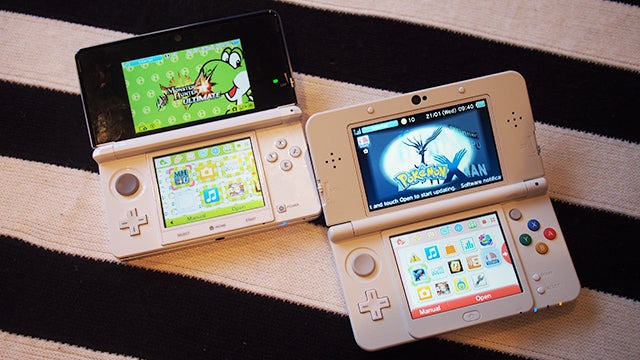
Should you upgrade to the New 3DS?
With the New Nintendo 3DS hitting the UK on February 13, you might be thinking of purchasing Nintendo’s latest handheld. But how does the New 3DS compare to the original 3DS released back in 2011?
We’ll guide you through the key points to consider in the battle of the 3DS handhelds, helping you to decide whether to splash out on an upgrade…
The New Nintendo 3DS and the New Nintendo 3DS XL are both released in the UK on February 13.
New Nintendo 3DS vs 3DS – Price
New Nintendo 3DS – £159.99 | $172
Original Nintendo 3DS – £149.99 RRP
Despite the fact that the New Nintendo 3DS comes with enhanced technology, including better 3D, battery life and a slightly bigger design, Nintendo is offering the new console for the same RRP as its predecessor.
Of course, since the original 3DS was launched nearly four years ago, retailers are offering it at discounted prices. That means you can usually pick it up for around the £100 mark.
Nintendo’s discontinued certain colours of the original 3DS, though, so if you’re looking for one that isn’t Ice White or Coral Pink, you may find you’re paying a bit of a premium.
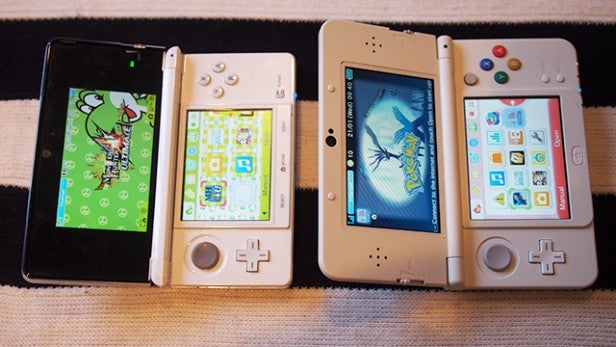
New Nintendo 3DS vs 3DS – Design
The most obvious differences between the New 3DS and the original are in the design.
For a start, the New 3DS is made from a matte plastic available in black or white, rather than the original 3DS’ glossy plastic that comes in an array of bright colours.
The finish of the New 3DS definitely makes it feel more premium than its predecessor. That’s also helped by the fact that Nintendo has improved the build quality.
Our trusty old 3DS’s hinge has always been weak. You can wobble the top half of the 3DS when you hold it with only a little force. This doesn’t happen with the New 3DS. Yes, there’s a little wobble, but you’ll want that for durability when being used by the younger generations. It certainly doesn’t feel as breakable as the original model.
Nintendo has also softened the corners of the New 3DS a little, making the overall package a lot more aesthetically pleasing.
SEE ALSO: 2DS vs 3DS XL vs 3DS
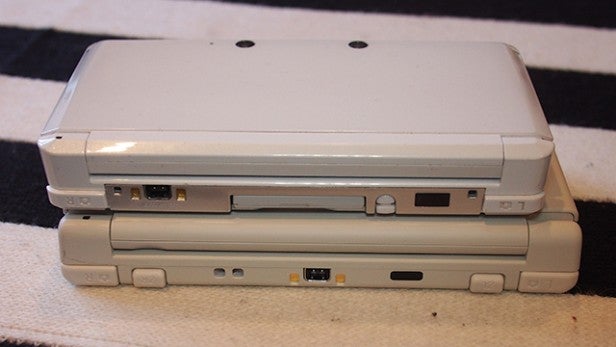
Because Nintendo has enlarged the screens of the New 3DS, you’ll also find the latest console is slightly wider and longer than the original – despite being the same thickness.
What’s also different about the New 3DS is that you have the option of customising the basic black or white chassis with cover plates. These retail for between £10.99 and £19.99 officially and can be swapped out with just a screwdriver. We’ve been trying out the adorable Yoshi one, which is a glossy plastic finish.
Unlike the matte finish of the New 3DS, the cover plates are very easily scratched, especially if you just chuck it in your bag – even without your keys in there.
One other thing to consider in terms of design is that, although the New 3DS uses the same charger as the Nintendo DSi, DSi XL and original 3DS, it doesn’t actually ship with one as standard. Nintendo is either assuming you’ll be upgrading from one of those handhelds, or will be willing to shell out extra dosh for one. They’re only around the £6.99 mark from the majority of retailers, though.
SEE ALSO: Best Games 2015
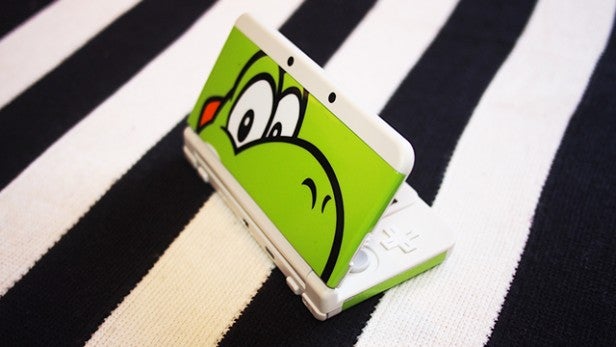
New 3DS vs 3DS – C-Stick
Opening the New 3DS, you’ll notice that Nintendo has changed the colour scheme of the face buttons to add a little SNES nostalgia. Instantly for us that was a win, and even for those who don’t get the SNES reference, it’s a nice touch to make the 3DS look a little more exciting.
But it’s the little nubbin above the face buttons that’s got a lot of people excited. This little grey circle is the New 3DS’s second analogue stick. It might not look like one, but it functions as a perfectly adequate secondary analogue stick for things like camera controls.
It’s a little disconcerting at first that it doesn’t move at all, though. You’ll be wanting to push and pull that button like a regular, albeit mini, analogue stick. However, it functions using the pressure of your thumb.
At the time of writing, there are only a few games that support the new C-Stick – Super Smash Bros. for 3DS and Monster Hunter 4 Ultimate. The former game uses it as the attack control for your chosen battler, while you operate the camera with it in the latter.
It will be interesting to see how future Nintendo titles use the C-Stick to help advance the control capabilities of the New 3DS and New 3DS XL. For now, it’s still a welcome addition.
SEE ALSO: PS4 vs Xbox One
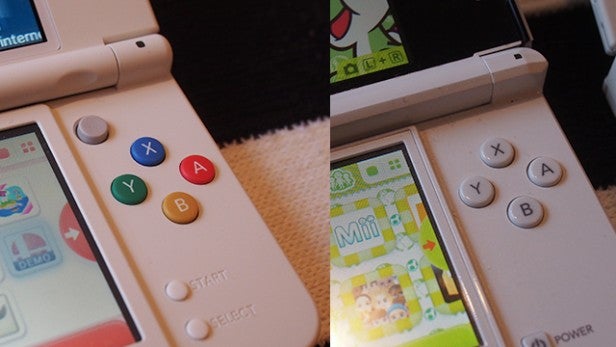
New Nintendo 3DS vs 3DS – Button Layout
Because of the larger screens and the addition of the C-Stick, Nintendo has had to reconfigure the button layout of the New 3DS. But also has chosen to add a few other new buttons to make the New 3DS feel more familiar to traditional console gamers.
Firstly, we’ll talk about those new shoulder buttons. The original 3DS only has one pair of shoulder buttons, whereas the New 3DS has the addition of a second pair – the ZR and ZL buttons.
That naming system will be familiar to those who have used or own a Wii U, or used the Classic Controller for Wii.
These secondary shoulder buttons haven’t yet been put to good use, but we imagine FPS games will take advantage of the fact the New 3DS has layout more akin to an Xbox one and PS4 controller in the future.
Aside from the secondary shoulder buttons, there are no other new additions to the button layout; Nintendo has just shifted things around a bit.
SEE ALSO: PS4 vs PS3
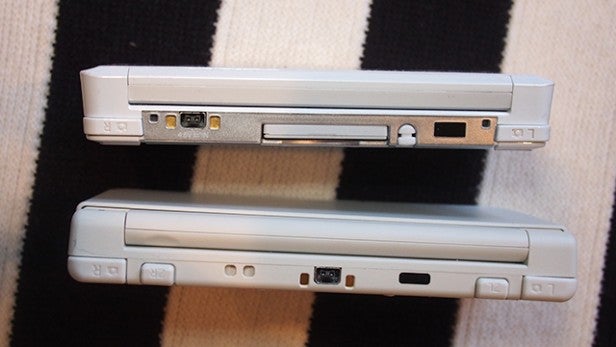
Below the bottom screen, the New 3DS now only has the home button, with the Start and Select Buttons moving to the right hand side underneath the face buttons.
However, the Power Button has now moved, rather awkwardly, to the bottom edge. That makes it a lot more difficult to access, thanks to it being nearly flush to the actual body. It is much better positioned for avoiding accidental presses though.
Along this bottom edge, you’ll also now find the stylus and game card slots. The stylus is easily accessible from this position. But annoying you can be prone to hitting the game slot with your left thumb or your palm, if you’re a gamer prone to shifting your grip during longer play sessions as we are, causing the card to eject mid-game.
Because of this, the top edge of your New 3DS is now only home to the charging port, the shoulder buttons and the IR blaster.
What’s a small downside for the New 3DS is the fact you now can’t turn off your New 3DS’ Wi-Fi connection on the body itself to save a bit of battery. You have to go into the mini settings menu found at the top right hand corner of the bottom screen’s home screen UI. In here you’ll find the Wi-Fi, Power Saving and new Automatic Brightness toggles.
One other thing that’s slightly different is that the volume slider is now on the left hand side of the top portion of the New 3DS, opposite the 3D slider.
SEE ALSO: Xbox One vs Xbox 360
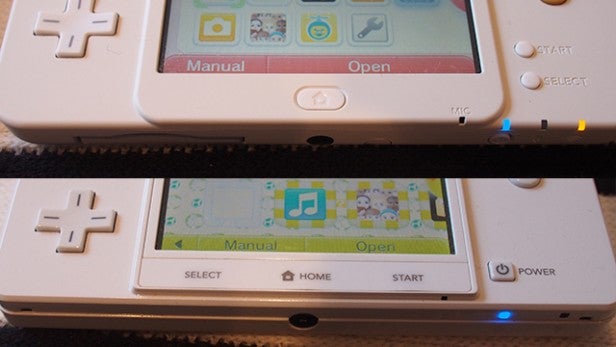
New Nintendo 3DS vs 3DS – Stylus
One of the things that we really don’t like about the New 3DS is its stylus.
The original 3DS had a metal clad, extending stylus with plastic tips. The New 3DS is equipped with a solid plastic alternative, much more akin to that found in the original DS.
The New 3DS’s stylus is thinner, shorter and of a lesser build quality than its predecessor, meaning it not only feels flimsier, but it also doesn’t seem adequate for larger, adult hands.
Nintendo should remember that the 3DS family is not only enjoyed by children, but also travelling adults too.
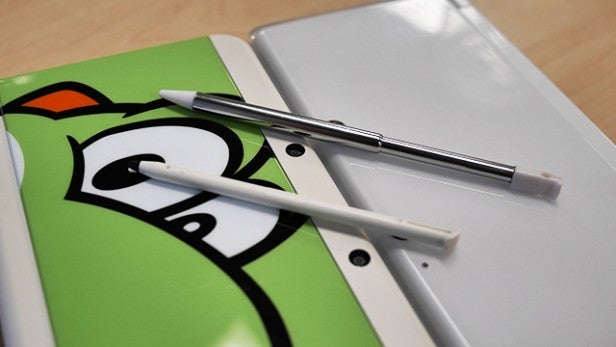
New 3DS vs 3DS – 3D and Screens
One of the unique selling points about the New 3DS is its improved 3D. Nintendo is calling the technology being used in the latest handheld Super-Stable 3D.
The idea is that the New 3DS uses the front-facing camera to track your face, automatically adjusting the 3DS according to the angle your 3DS is at to your face.
In practice, the viewing angles for the 3D with the newest console are far better than its predecessor, making it easier to play games in 3D when you’re moving about move – like on public transport. Before, you’d be hard pressed to use your 3DS while on a moving bus or train even with the 3D only turned on a little.
Although you won’t experience IPS viewing angles in 3D, you’re going to find the New 3DS is far more forgiving, giving you a little more leeway for the 3DS jiggling around.
It’s far from perfect though. Because it’s tracking your eye and head movement, the 3D isn’t quite ever spot on if you’re wearing glasses, unless your holding the 3DS perfectly still.
Although there are a few issues with it, when you’ve hit the sweet spot, the 3D is crystal clear and far more colour rich than with the original 3DS.
Put it this way, we never play games in 3D on the old 3DS, but we find ourselves flicking up the 3D slider on the New 3DS more often than not.
SEE ALSO: How to upgrade your Xbox One storage
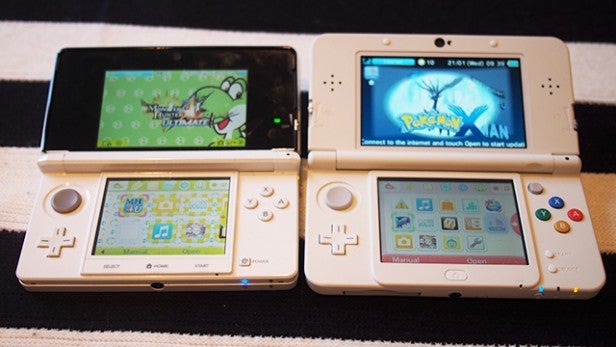
That’s partly helped by the larger screen sizes too. The screens on the New 3DS are 1.2 times larger than the original, giving you more screen real estate, even if you opt for the New 3DS rather than the larger New 3DS XL.
It makes 3DS a more comfortable viewing experience and helps make your games feel more immersive.
Nintendo has added automatic brightness technology with these new screens too, allowing the screens to automatically adjust the brightness according to your surroundings. This not only saves the battery life on the newer console, but aids visibility in direct sunlight.
SEE ALSO: How to upgrade your PS4 storage
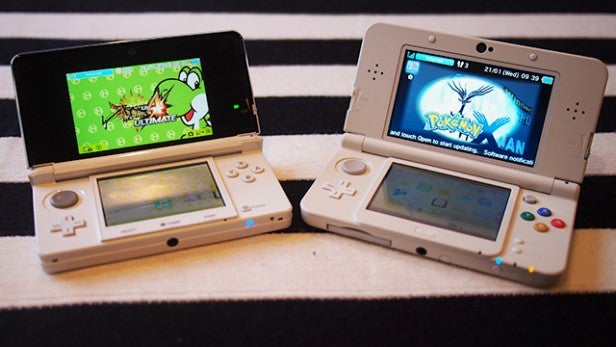
New Nintendo 3DS vs 3DS – Processor
Although Nintendo isn’t offering specific processor specs, the company claims the New 3DS’ processor is a considerable leap over the old iteration.
Because of the improved CPU, you should immediately be seeing faster download speeds, faster loading speeds for games and applications, and a more responsive UI.
We’ve not noticed huge improvements with the UI and haven’t conducted any comparison timing tests to see if microsecond improvements are there yet. We never believed the UI was particularly sluggish before, though.
But we have enjoyed the benefits of faster download speeds. We never realised how slow the download speeds on the older 3DS were before the new 3DS came along, but the latest model is capable of downloading a full 3DS title in a matter of minutes – rather than an hour or so.
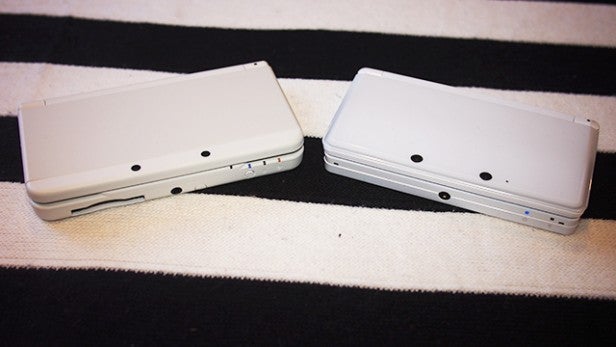
New Nintendo 3DS vs 3DS – NFC
Another new addition to the New 3DS is integrated Near Field Communication (NFC).
The New 3DS, and the larger 3DS XL, have an area on the bottom screen that has NFC reading and writing functionality built in.
This means you can utilise Nintendo’s amiibo range – interactive figures that you can use with selected games, including Super Smash Bros for 3DS and other titles on the Wii U.
For more information see our full Nintendo amiibo review.
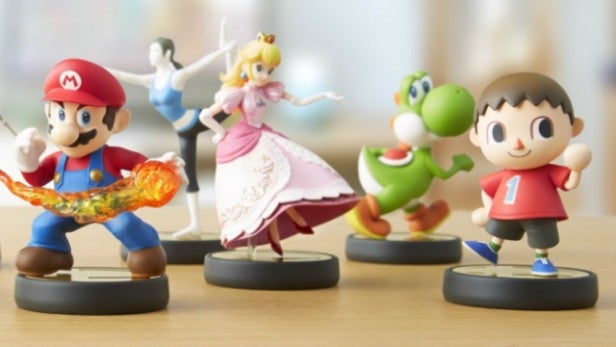
New Nintendo 3DS vs 3DS – Games
Nintendo has promised that the processing improvements will mean a significant bump to games, too. However, we’ve not seen anything to prove that so far, apart from a video of the Xenoblade Chronicles port.
At the moment, the New 3DS runs all the same games as the original 3DS, and the old DS games as well.
It’ll only be a matter of time until Nintendo and other third-party developers start taking advantage of the additional processing powers, the C-Stick and the second set of shoulder buttons.
What’s good is that the SD card slot has been replaced with an internal microSD card slot and every New 3DS comes with a 4GB card that’s big enough to store three or four full-sized games on. Larger storage sizes in microSD cards will only cost you around £5 and we’d recommended grabbing yourself a 16GB or 32GB card if you’re looking to buy lots of digital titles.
SEE ALSO: Skylanders Trap Team vs Disney Infinity 2.0
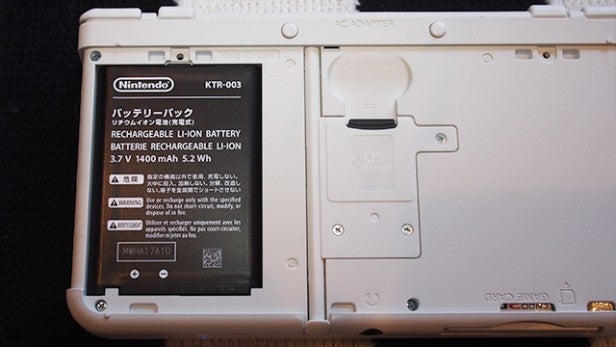
Verdict
Gripes about an inferior stylus aside, the New 3DS is very much the superior beast.
Buy Now: New 3DS at Amazon.com from $172
Vastly improved 3D quality, the SNES-themed buttons, the long-awaited C-Stick, a second pair of shoulder buttons and the promise of more powerful games makes the New 3DS a must-buy and a better console than its predecessor.

